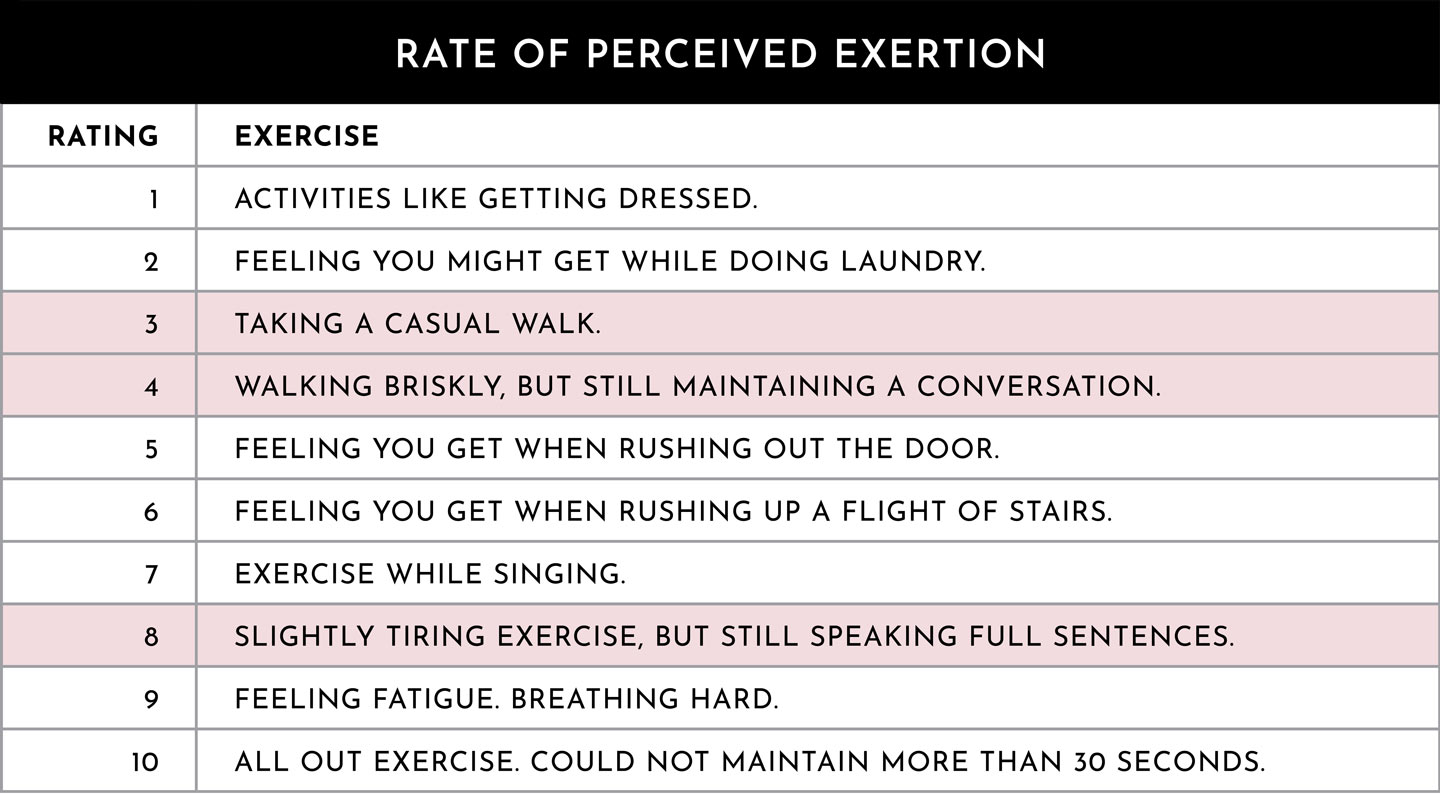
Like any cardio activity, walking is great for your heart health!
But walking also:
Sometimes we think walking just isn’t enough. But I want to tell you why a leisurely continuous walk is just as important as an intense one.
We don’t train our biceps one way. Same for the heart.
An interval workout has its advantages, outlined below. But steady-state cardio can be performed for longer and easier. Steady-state is also known as moderate-intensity training (MIT) or moderate-intensity continuous training (MICT). Both moderate-intensity continuous training (MICT) and interval training provide results.
You do not need a fit watch. In fact I recommend you don’t track steps. Ahead of time you can take a drive and map out mileage, or use online tools like Google Maps or MapMyWalk.com. Or simply estimate a route that takes 20 – 30 minutes to complete in your neighborhood.
So how can we get the most out of walking so it doesn’t become a casual stroll?
Start with a 3 – 5 minute regular paced walk. Then alternate a “sprint walk” (8 of 10 effort level) for 2 min and “brisk walk” (4 of 10 effort level) for 1 minute. Continue for 20 – 30 minutes.
Start with a 3 – 5 minute regular paced walk. Then alternate a “sprint walk” (scale 8 of 10) for 90 seconds with an easy casual pace (scale 3 of 10) for 30 seconds. Complete 8 – 10 times. Option to add a light jog every other set.
Your body will benefit from finding an incline in your neighborhood or using a treadmill. Try 4 minutes of intensity followed by 2 minutes of relief walking.

Our Weekly Schedule includes walking and intervals as the primary aerobic activity — so your body gets the benefits of both.
We don’t usually think about form when we walk. We simply lace up our shoes and get going! But the next time you hit the pavement, keep these cues in mind.
Roll off of your big toes symmetrically — When we push off one big toe more than the other we create a pelvic rotation.
Reciprocal arm swing — Make your arm swings even. Try not to be more dominant on one side.
Stride length — If you are taking too long of strides, you are asking your body to do/and control a significant amount of rotation. Starting with a natural stride and progressing to increasing cadence vs. stride length can help your success in our Weekly Schedule where we pair strength days with walking days.
Focus on upright posture and transverse abdominis (TA) contraction — Conscious engagement of the TA will also get pelvic floor to kick in. Squeezing your glutes or “heel to toe” can also be good cues as long as long as you don’t overdo it … we don’t want to become behind clenchers.
Control pelvis rotation — A little wiggle in all directions is good, but not a wobble.
Altered mechanics of the pelvis causes pain (e.g., muscle imbalances, leg length issues, sciatic symptoms, knee pain, back pain) and also affects the way our muscles fire. Pelvis rotation is super duper common in moms. We talk about this in the Ab Rehab Guide.
When I was going through physical therapy for running (I had to stop running for 6 months due to knee pain), my PT changed my gait, or the way I walk. One side of my pelvis was always forward. He had me fixed and running in three weeks. I cannot emphasize enough the 1-1 attention to your kinetic chain from a PT is gold, especially if you have any knee/hip problems.
If you’re following our Weekly Schedule, we take care of working your deep core muscles and reducing imbalances.
As women, we usually think strength training is good for bone density and aesthetics, but strength training also helps us maintain a level where we can do all the things we love easier and for longer.
Strength training is also very important to increase the tolerance for load on our joints and structure. Depending on what your day and life looks like, you will need to train your body to be able to hold up to your daily activities. Whether it is chasing your kiddos around the yard, running a marathon, or getting in shape, your body has to be able to effectively manage and control your movement and positions. For me, when I strength train, my knees don’t hurt when I run.
You need to specifically strengthen your body/muscle groups to be able to withstand the physical demands you put your body through. For example, a marathon runner needs to run to build endurance, but if she does not appropriately strengthen the muscles that control side to side and rotatory motions (i.e., glutes, adductors, core), she will eventually end up with a repetitive injury.
For some, the word strength training defaults to the thought of bulky muscles. Due to our low levels of testosterone, it is difficult for women to develop bulky muscles. And at Moms Into Fitness, we don’t stack our workouts in a way that increases mass. SO now that we’ve gotten that out of our brains, it’s time to add strength training to your walking routine.
Try our Weekly Schedule for FREE!